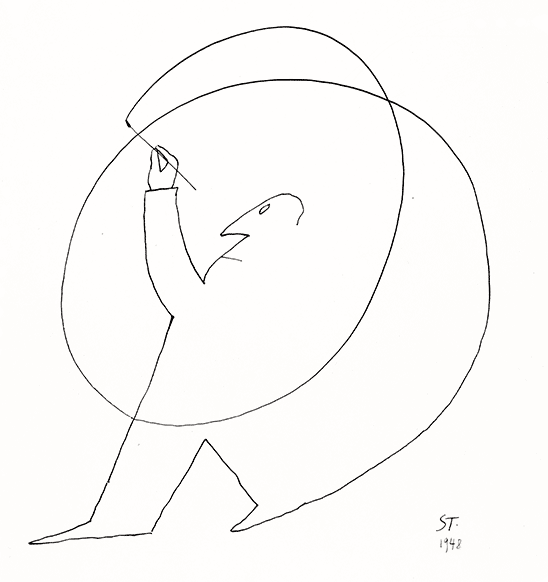Exhibitions & Books
Steinberg’s commercial work is too often isolated from his gallery art, whereas both groups, connected in style, concept, and motifs, are the product of a single artistic vision. In the art world, Steinberg had first achieved prominence in 1946 as a participant in the famous “Fourteen Americans” exhibition at The Museum of Modern Art, New York, where his work hung alongside that of Arshile Gorky, Robert Motherwell, Isamu Noguchi, Theodore Roszak, and Mark Tobey. His first major solo show took place in 1952, a two-gallery exhibition mounted by the Betty Parsons and Sidney Janis galleries in New York. (Parsons and Janis became his US dealers, holding joint exhibitions of his work into the 1970s; beginning in 1982, he was—and continues to be—represented by the Pace Gallery.) Versions of the 1952 sell-out show traveled in the US, England, France, Brazil, Holland, and Germany for three years. In Paris, it was installed at the Galerie Maeght, which continued to mount Steinberg exhibitions through the 1980s. His art came to further international attention with the periodic publication of drawing compilations, beginning with the best-selling All in Line (1945), followed by The Art of Living (1949), The Passport (1954), The Labyrinth (1960), The New World (1965), and The Inspector (1973).

